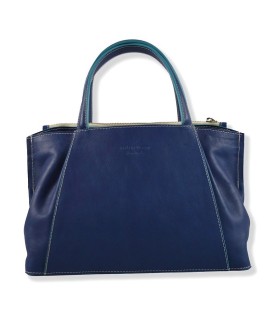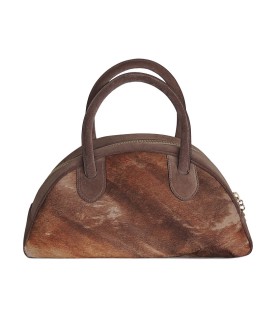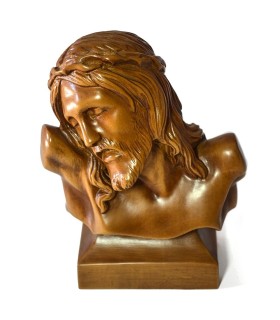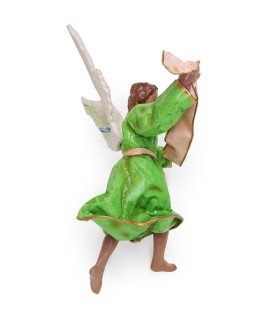The Ancient and Noble Art of Silk
History

Silk has a millennial history. It is said that the birth of the silkworm is attributed to the Chinese Empress Xi Ling Shi, but probably the silk was known in China as early as 3000 BC. The silken robes that were reserved for Chinese emperors became part of the wardrobe of the richer social class, becoming a coveted luxury item that was extended to the areas reached by the Chinese merchants for the qualities of lightness and beauty.
It arrived in Italy at the XI century and what happened next is that Italy became the largest producer of European silk – the cities of Palermo, Messina, and Catanzaro were particularly famous. From Palermo, the cultivation of the silkworm and silk processing would spread first in Italy and then in Europe. The Italian record was in fact disputed by the region of Lyon in France in the seventeenth century, when many artisans from Catanzaro came under French rule. The breeding of silkworms was an important income support to the agricultural economy and the production and trade of fabrics – together with that of wool it was a very profitable industry that gave power and wealth to the corporations who practiced it, as in Florence where the Art of Silk was recognized as one of the seven major guilds.
Silk yarn industries flourished in Lucca and then, at the end of the thirteenth century, in Bologna; the “Mulino Bolognese” (“Bolognese Mill” in Italian) is well described in a chronicle of 1621:
“Some big machines, which were moved from a small gutter from the Reno water, move individually with great spin rapidity, twist and double four thousand rows of silk, operating instantly with the capacity of four thousand spinners”.

The “Mill Alla Bolognese” improved the machines used from Lucca by a water wheel and a mechanical winder and allowed to obtain smoother and stronger yarns than those produced by hand or other mechanical means. A strong technical and mechanical energy innovation for the canals of Bologna, according to many historians of the Industrial Revolution the “Bolognese Silk Mill” is an important model of proto-industrial system that enabled the city to market yarn throughout Europe through the Navile Canal.

Along with China and Japan, Italy is at the top of the world’s raw silk production: Primeggiano Catania (based in Palazzo Auteri), Como, area of Meldola nel forlivese, and San Leucio (Caserta).
Characteristics

Silk is a fiber protein of an animal with which one can obtain very valuable tissue. It is produced by particular insects of the order Lepidoptera, or spiders. The silk used to make tissue is obtained from the cocoon produced by silkworms, in most of cases the species Bombyx mori. Sometimes, also some species of the family Saturniidae are used. The silkworm secretes a filament length ranging from 350 meters to 3 km, with which it forms a cocoon that can provide protection during metamorphosis. The filament is formed by two strings of the fibroin (present at about 80% by weight) wrapped in the sericin (about 20%). The latter is eliminated during a process called “degumming”. Under the microscope the fiber has a regular appearance, very similar to that of synthetic fibers.
Sericin can be eliminated by treating the thread of raw silk (crude silk) with hot water – this treatment improves the gloss, the flexibility and the “hand” of the fiber. Depending on the amount of sericin that can be eliminated, there can be produced:
- The degummed or cooked silk, when the silk gum has been removed completely;
- The softened silk or “souple” (flexible), in which sericin is removed only partially.

In the case of cooked silk one can make a treatment of “caricature” that serves to improve the resistance of the fiber, in case it had been compromised from the process of degumming. A special feature of this fiber is the length of the filament that can easily get to 700-800 meters. This makes it the longest animal fiber. From 100 kg of cocoons, 20 – 25 kg of raw silk and 15 kg of fallout are obtained.
The Mulberry, the plant of the precious silkworm

In the countryside, as well as in the valleys of the hills up to 700 meters above sea level and in sunny places, a tree native to China and India was introduced in Italy in the fifteenth century was widespread in the early decades of the last century: it was the White Mulberry, the only tree in the world grown to provide nourishment to the precious silkworm. These worms fed on mulberry leaves, the trees of which grew in several long rows. It was necessary to collect large amounts of mulberry leaves and give them to those insects, which they “devoured” before locking themselves in cocoons.
The Art of Silk
This corporation (guild) reunited several categories of traders and craftsmen whose shops were mainly located between Via Por Santa Maria, Via Porta Rossa, Via Calimala and the church of Santa Cecilia, in Piazza della Signoria.

The Florentine silk manufacturers were both traders and weavers; the production of silk in the city recorded a significant increase from 1314, the year in which Lucca, who until then held the record in this area, was conquered and sacked by Uguccione Faggiola, lord of Pisa. Many silk merchants from Lucca decided to move to Florence in order to escape the economic ruin, bringing together all their knowledge; the production became more diverse and the beautiful packed fabrics became increasingly demanded. So there was an initiation of local cultivation of silkworms, which until the end of the fourteenth century was not practiced in Tuscany; but the real Florentine “silk industry” reached the highest levels in the fifteenth century, when the damask fabrics and brocades woven with threads of gold and silver appeared, which quickly became famous and exported throughout Europe. They certainly were luxury goods, intended for a refined and demanding clientele, very attentive to fashion trends of the time. However, the guild offered the guarantee to promote a perfect product, made according to painstaking criteria and highly skilled workers. Some stages of production were almost entirely entrusted to the women who span, weaving and embroidering; an almost “offhand way”, still in use today, comes almost just from the parlance of the women who dealt with it, which in case of breakage of one of the weft threads during weaving had to stop the frame and patch it “by eye”, going several times up and down with the needle and thread “crossed by ear”.
Sericulture
The cultivation of the silkworm is a long process that requires special care and attention. In the past, even though it covered the entire family, it was configured as essentially a female activity..

The silkworm breeding began with the hatching egg, which was produced in February and was generally sold in the second half of April. The incubation lasted from eight to ten days, after which the egg would have hatched. The larva was fed below with finely chopped mulberry leaves. When it reached the appropriate size it was placed on mats of reeds or axes placed one above the other in a wooden structure supported by four poles, known as “castello” (“castle” in Italian). Here, nourishment and growth continued, characterized by four long periods of inactivity, after which the worm, eating up to five – six times a day reached the stage that precedes the pupa.
One at a time, when the filament protruded from the mouth, the bug was ready for the wood that in less than a week would be populated by cocoons, subsequently transferred to the spinning mill for spinning.
Spinning: from the cocoon to the thread of silk
Spinning is a long and complex process that already in the Neolithic was undergone with the help of a spindle. Completely identical to the model used in South America, Africa and traditionally in southern Italy, in order to twist the fibers the first tool used by humans was hands. The work consisted of a stick (along a span) inserted in a round whole (4-6 cm wide). The rotation at the stick, prolonged by the inertia of rod twists the fibers that are related to the spindle, which in turn accumulates on the wire the finished rod.

Spinning was a prolonged work which held busy a considerable part of the population, especially women and children. The production of an active spinner could have been a few hundred grams a day, so the need to speed up the processing led to the construction of a wood apparatus that was operated by a pedal and which accelerated much of the production. In the Middle Ages, the device called Spinning Wheel started to be used. The first Spinning Wheel dates back to 1280. In the mid-eighteenth century, with the industrial revolution the mechanization of spinning started. In 1764 James Hargreaves invented the first mechanical spinning intermittent work (Spinning Jenny or Jeannette), which he would patent in 1770. In 1769, Richard Arkwright will operate the water wheel, and in 1787 one of the first steam engine was put to work.
The cycle of traditional spinning
The spinning requires some working phases of the materials, which are indispensable to the preparation of the fabrics that differ depending on the fibers used.

Preparation: open, mix and clean the material, provide the keystroke for the wool shredding with brakes for flax.
Carding: distrives the fibers, giving it a certain order which can be followed by structural or aesthetic finishes as:
Spinning: torch fibers turning clutter carded cord more or less subtle. The result is called yarn.
This can be followed by structural or aesthetic finishes like:
Doubling: coupling with torsion of bosses to obtain a yarn more robust and more stable.
Washing
Dyeing
Industrial Spinning
The industrial spinning is carried out by batteries of machinery which operate in fully automatic mode. The phases of processing change in relation to the type of the desired product. The operations for the long spinning include the following phases:
Preparation:
Cleaning and dusting with compressed air
Shuffle: mixing of the fibers from different bales or of different materials.
Carding
It aims to orient the fibers at a single direction (parallelization) using special machines called carding or “sets of carding machines.” The card is made up of large rotating cylinders (drum and doffer) provided with metal teeth of a suitable thinness and number, registered between them within hundredths of a millimeter (40 to 15 progressively), by carding subsidiary bodies (workers and voltigeurs ) and a number of other subsidiary bodies (steering wheel, upper wheel, lower wheel, revenue, etc.). The fibers pass through these two moving pronged surfaces, in order to be unraveled and oriented until they are reduced to pass into the passage in a web of parallelized fibers that is converted into carded sliver (flat) in the last part of the machine called “splitter” .

Combination
It aims to increase the homogeneity and the parallelization of the fibers, discarding the shorter ones.
Pressing
It has the purpose of mixing and regularizing fibers of different kinds or different batches of the same kind (for example synthetic fibers with natural fibers) and make the wick uniform, proceeding to a series of pairs and subsequent aligning (by drawing frames) to obtain a determined number fibers in each point of the same wick, so that it can reach, during the subsequent spinning step, the desired title; that is, the desired fineness.
Spinning
The wick is not very strong; in order to obtain a tenacious and homogeneous yarn, it is then further thinned by torsion by means of so-called “roving”. The wick coming from the “roving” finally undergoes the twist and the final winding on bobbins or coils (coiling) in spinning machines which can be intermittent (self-acting) or continuous (for fins or rings).

Winding
The spindles of yarn produced by the ring-spinning machine are performed by a winding machine and rewound in the form of rock that usually is of truncated conical shape and of weight ranging from 900 grams to 3000 grams.
Raising silkworms
Studying to become a doctor, architect, pharmacist? Better learn how to breed silkworms.
Among the new jobs linked to the agricultural sector (one of the few to record gains in employment despite the crisis), turns out to be that of the silkworm rearer, an ancient craft that has its origins in the millennial China; widespread in Italy until the second half ‘of the nineteenth century . Today, however, the return of silkworms breeders is not unusual and may prove to be profitable, both for the production of the more and more required silk fabric, but also for activities in the medicine and cosmetologically, for the reason of valuable proteins (fibroin and sericin) that make up the silky filament, useful for example to build the suture thread used in surgery but also creams and cosmetological ointments..

“The demand for silk is always higher and higher – it is a niche market of luxury to which China has so far responded with a competitive production that has played all competitors” explains Silvia Cappellozza, researcher at “Padova del Cra” (agricultural research center) where she directs the ‘experimental silkworms” unit. But, now the well-being that is spreading in the country is pushing the silkworm in the poorest areas in northwest China, where the climate is hostile and there is a lack of staff with the skills needed for the delicate task. “The fall in Chinese production of silk is bothering the textile chain, including Italian companies” says Cappellozza, between a break and the other of going and feeding the worms, precious not only for silk. Fibroin, including proteins, has a high reliability in the medical field and is biocompatible and does not create discards – so, it is very suitable for sutures for example. There is a strong interest of the biomedical and tissue engineering for use extended to other products, such as vascular grafts, membranes for repairing damaged corneas or even last generation contact lenses, alternative to glass or plastic. And that is not all. The silk of silkworms can also be used for creams. The pigments contained in the sericin are carotenoids, which have a strong antioxidant, antibacterial and flavonoids.

For this reason, sericin is used for creams, lotions, shampoos and ointments. In the meantime, new experiments are revealing new different uses. In fact, the silkworm can also have a function from the nutritional point of view, as it was pointed to a recent FAO study on the possibility of fighting poverty and hunger through edible insects. “The research carried out on the silk worm in order to obtain innovative products are the result of the work done by the Ente, simultaneously pursuing practical purposes and basic research” – says the president of the CRA (Council for Research and Experimentation in Agriculture) Giuseppe Alonzo. In fact, with silk you can produce a natural fiber with an environmentally friendly technology, a process of production that uses only water, energy and protein; there is also a possible use of the silkworm for different products from the textile industry. “In short, is investing in silkworm raising interests? “It’s a question that many do ask – answers Silvia Cappellozza – the premises positive. In fact, the first groups of silkworm breeders are spreading and they are much more “technological” than their great-grandparents. “The professional breeders at the time speaking are at least twenty in Italy, of which only a quarter for at least two years; the breeding of the cocoon is a fairly widespread at an amateur level. Between installations costs and production, the initial capital should be that of approximately 10 thousand euros.
Silk craftsmanship in Italy

The growth of silk production in Italy began with the end of the fifteenth century. In this period the country was presented primarily as an area of raw material production, raw silk. Initially the spread of raw silk occurred in southern Italy, particularly in Calabria and Sicily, regions where it was done more with the cultivation of mulberry trees. Later in the fifteenth century, this began to spread in various areas of the Po Valley; one of the areas with the highest concentration of production of the raw material was the Venetian mainland, especially in the territories of Vicenza and Verona that later would become the biggest European producers of raw silk. As you can imagine, the raw silk could be exported and this meant a not negligible economic disadvantage, since the added value was on the finished product and not on the semi-finished one. So if a country specialized on raw material, it could not certainly be the leading country and this is precisely why Italy went from dominating the European economy, to subject of surmount by the countries of Northern Europe.
Despite this Italy persisted, with cities like Lucca, Florence, Milan and Genoa producing the finished product; it is also important to remember Bologna, which specialized in a particular production of silk drapes: the veil of silk – a very light fabric that had to be fully treated in completion.

If the 1146, with the opening of silk mills in Palermo, Reggio Calabria, Catanzaro and Messina, marked the beginning of great art Italian silk, the 1272 saw the opening the first roving in Bologna, by Lucchese Francesco Borghesano.
The production of cocoons in Italy begins to decline in the period between the two world wars and eventually disappear after the last, due to two factors: the production of synthetic fibers and change in agricultural organization. With urbanization and industrialization foreign competition became untenable. They continued to produce, thanks to advanced technologies and high quality products for fashion and furnishings, textures and printing of the center-north, working with Chinese silk. Now that Asian countries are heavily industrialized and their technological level and quality corresponds to the needs of their Western counterparts, competition has become untenable: many Italian producers simply trade with their brands products made entirely abroad.

In 1900 the leading exponents of the silk industry were the Italian families Gavazzi and Ferrario (cav. Comm. Uff great. Angelo Ferrario, President of the national and international silk industry from 1913 to 1929) and also, the Schmid company. The Schmid had factories in Cavenago di Brianza (MB) and Cassolnovo (PV), but it was based in Milan. All the fabric used to cover the boxes and walls of the “Teatro Della Scala” in Milan after the bombing during World War II were produced at the Cavenago. Also, all the stuff used to make the mantle of the Queen of Italy, Elena of Montenegro was produced at the Cavenago.
Constancia Bags – Elegance is not being noticed but being remembered
The evolution of ceramics processing in human history
The Ancient Art of Wrought Iron


















































